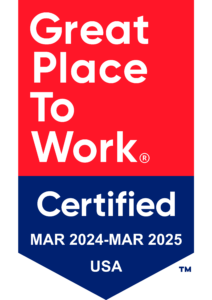In the dynamic realm of surveying and engineering, where precision is paramount, aerial mapping serves as a cornerstone, providing invaluable insights for project stakeholders. These maps provide a bird’s eye view of projects, offering precise imagery, topography maps, and planimetric details needed by architects and engineers before they can start a project. However, recent trends in the aviation insurance industry are causing ripples that impact the bottom line of surveying and engineering firms.
This article aims to delve into these trends, their implications, and how forward-thinking firms, such as AeroTech Mapping, are charting a course through these challenges.

Trends in the Aviation Insurance Industry
Escalating Costs and Operational Impact
Over the past five years, aviation insurance costs have doubled. This surge is attributed to rising values of aircraft, inflation, the $3.5B lawsuit involving Russia’s confiscation of almost $10B in aircraft, and $3B in claims from Boeing’s 737 Max issues. These have caused aviation insurance firms to increase premiums to recoup these unexpected losses.
Increased Insurance Requirements from Utility Companies & Contracting Departments
Utility companies impose higher insurance requirements on subcontractors as part of their general risk management strategy. In the event of incidents, utility companies seek coverage from their subcontractors’ insurance, influencing the industry’s insurance landscape. Contracting departments of larger firms include higher insurance amounts in their standard contracts without a nuanced understanding of project-specific needs. This can lead to challenges for subcontractors, including excessive costs associated with pulling Certificates of Insurance (COIs). There have been times when the cost to obtain the requested level of insurance and pull a COI for the project has cost as much, if not more, than the aerial itself!
Challenges with Obtaining Higher Coverage for Standard Mapping Aircraft
The aircraft’s engine has an impact on the cost of insurance and the availability of higher coverage. We’ll focus on two types: Piston and Turboprop.
High performance piston engines (generally 6 cylinder and often turbocharged) make up the bulk of the aerial survey fleet worldwide. Aircraft with this type of engine are ideal for Design-Scale Mapping due to the lower altitude and speed at which they operate.
Turboprop engines are a turbine design that drives a propeller for thrust. These engines enable much higher speeds making them ideal for projects flown at higher altitudes (wide area, large scale, lower accuracy mapping).
While Turboprop engines can secure higher insurance coverage, they are less ideal for high-accuracy, Design-Scale mapping due to the higher speeds and altitude. Piston engine aircraft tend not to qualify for higher coverage but fly at the appropriate altitude and speed for these kinds of projects. Additionally, standard camera and LiDAR sensors used by most aerial mapping firms for Design-Scale Mapping are not able to provide the required overlap when flown at these higher speeds. Aircraft with Piston engines fly at speeds where these sensors are most effective, which makes them the ideal aircraft for aerial mapping firms focused on high-accuracy, Design-Scale mapping. There are specialized sensors for planes with Turboprop engines, but these tend to be for unique use cases.
Implications
Impact on Surveying and Engineering Firms
The repercussions for surveying and engineering firms are evident – escalating costs for aviation insurance, higher expenses related to providing COIs, and potential project/payment delays due to insurance-related issues. As insurance becomes a pivotal factor in risk management and project planning, firms face the challenge of maintaining a competitive edge. Two ways to maintain that edge are discussing insurance up front and choosing the right aerial mapping partner that can handle a variety of insurance scenarios.
Best Practices for Surveying Firms
In navigating these challenges, surveying firms are advised to incorporate insurance discussions into their project discovery processes. Proactive communication with clients and contracting teams, education on standard insurance requirements, and alignment with subcontractors become critical elements in mitigating potential issues. This practice gives the client the feeling that they’re working with a knowledgeable, trusted advisor.
Solution
AeroTech Mapping’s Approach
Enter AeroTech Mapping. With a fleet optimized for high-accuracy design-scale mapping, including Cessna 206s with turbo charged Piston engines, we ensure effective data capture at appropriate speeds. While $5,000,000 in aviation insurance is often the norm for aerial mapping firms with similar aircraft, AeroTech carries a standard of $10,000,000, coupled with access to $25,000,000 for specific projects. This provides our clients with a unique solution to meet their client’s risk management needs.
Our proactive approach extends to our team’s training to identify which projects are likely to have higher insurance requirements and discuss them before delivering proposals, preventing unexpected costs post-project and ensuring smoother payment processes.
As the aerial mapping industry grapples with evolving aviation insurance trends, the need for informed decision-making has never been more crucial. This article underscores the importance of understanding these trends, adopting best practices, and having reliable partners like AeroTech Mapping. In a landscape where precision is key, AeroTech stands as a dependable ally, providing not just aerial mapping services but a comprehensive solution to the challenges posed by the ever-changing terrain of the aviation insurance industry.
Sources:



